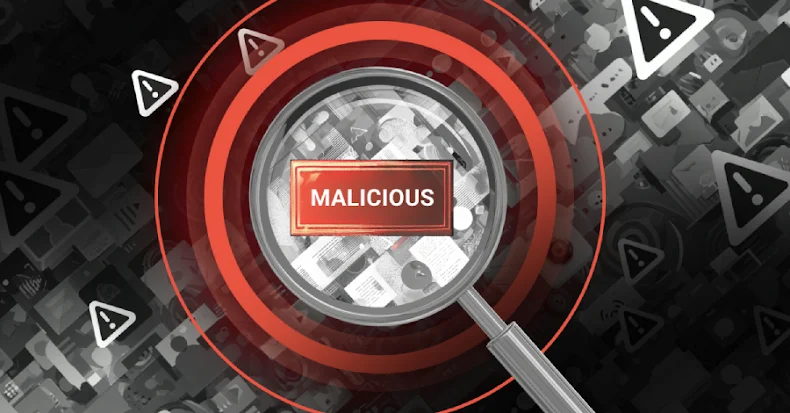
Behind every alert is an analyst. Tired eyes scanning the dashboard, long nights spent on false positives, and a constant fear of missing something big. It’s no wonder that many SOCs experience burnout before facing their next breach. But this doesn’t have to be the norm. The way out is not by working harder, but by working smarter and together.
Here are three practical steps every SOC can take to prevent burnout and build healthier, more resilient teams.
Step 1: Reduce alert overload with real-time context
SOC burnout often begins with vigilance fatigue. Traditional systems only provide fragments of the story, and analysts waste hours analyzing incomplete data. By providing teams with complete behavioral context behind alerts, leaders can help teams prioritize faster and act with confidence.
Leading SOCs are already turning to advanced solutions like ANY.RUN’s interactive sandbox to cut through the noise. Instead of static logs, watch the entire attack chain unfold in real-time, from initial process execution to network connections, registry changes, and data exfiltration attempts. All actions are visualized step-by-step, so analysts can instantly see what is malicious and what is safe.
See recent attacks in full disclosure in real time
 Real-time analysis of click-up fraud fully exposed in 60 seconds
Real-time analysis of click-up fraud fully exposed in 60 seconds
For example, in this analysis session, analysts exposed the entire phishing attack chain in just 60 seconds, revealing how attackers exploited ClickUp to deliver fake Microsoft 365 login pages. This fast, real-time detection turns hours of log review into a clear, actionable case.
See how SOCs can achieve 3x efficiency and eliminate analyst burnout with real-time, connected analytics.
Talk to an expert at ANY.RUN
Here’s what SOC teams can gain from real-time, interactive analytics:
Safe hands-on investigation: Analysts can work with live samples within an isolated environment, reducing the risk of human error in production systems. Complete attack chain exposure: Visibility into every process, file, and network action helps identify the origin, intent, and lateral movement of threats. IOC extraction in seconds: Behavioral data is automatically captured, making it easy to feed validated metrics directly into detection systems. Reduced false positives: With clear evidence of action, teams can review or dismiss alerts faster, increasing confidence and focus.
The result: faster triage, less noise, and a gentler, more efficient SOC.
Step 2: Automate repetitive tasks to keep analysts focused
Even the best SOCs spend countless hours on low-impact manual tasks like collecting logs, exporting reports, copying IOCs, and updating tickets. These repetitive tasks may seem small, but when they add up they reduce focus, delay investigations, and cause burnout.
Automation breaks this pattern. When the system takes care of the day-to-day tasks, analysts can spend their time doing more valuable work. Investigation, detection coordination, and incident response.
Real breakthroughs come from combining automation and interactive analysis. This combination saves a lot of time while giving analysts control. In fact, some sandboxes, such as ANY.RUN, include automated interactivity. The ability to perform human-like actions such as solving CAPTCHAs, finding malicious links hidden behind QR codes, and performing tasks that traditional tools cannot handle without manual input.
 QR code-based phishing is fully exposed within the ANY.RUN sandbox. Hidden malicious links and complete attack chains are revealed within 60 seconds.
QR code-based phishing is fully exposed within the ANY.RUN sandbox. Hidden malicious links and complete attack chains are revealed within 60 seconds.
The sandbox behaves like an analyst, interacting autonomously with the sample while allowing experts to intervene whenever necessary.
As a result, SOC teams gain both efficiency and flexibility, allowing them to scale capabilities without sacrificing accuracy. According to ANY.RUN’s latest research, teams using this combination of automation and interactivity achieved notable results, including:
95% of SOC teams accelerated threat investigation. Reduce workload for Tier 1 analysts by up to 20%. Tier 1 → Tier 2 escalation has been reduced by 30%. Increase SOC efficiency by 3x with faster triage and automated evidence collection.
The result: A centralized, high-performance SOC where automation handles the grunt work and analysts handle what really matters.
Step 3: Integrate real-time threat intelligence to reduce manual effort
One of the most exhausting parts of a SOC analyst’s job is tracking down stale data, validating domains that are already inactive, reviewing expired IOCs, and switching between disconnected tools just to see what’s true. This constant context switching can drain your focus and lead to burnout.
The solution is smarter integration. When fresh, verified threat intelligence flows directly into existing tools, analysts spend less time looking for context and more time acting on it.
That’s why leading teams rely on ANY.RUN’s threat intelligence feed, which collects live IOCs from over 15,000 SOCs and 500,000 analysts around the world. Each metric comes directly from real-time sandbox research, meaning the data reflects current phishing kits, redirect chains, and active infrastructure, not last month’s reports.

These feeds seamlessly integrate with existing SOC platforms, allowing analysts to:
Access continuously updated data without leaving your familiar environment. Trace each IOC back to live sandbox analysis to see how the threat actually behaves. Avoid repeatedly checking manually for old domains or expiration indicators. Act quickly with confidence using evidence backed by current global activity.
The result: fewer context switches, faster validation, and analysts stay sharp instead of overwhelmed.
Prevent analyst burnout with real-time insights and smarter workflows
SOC burnout isn’t just caused by workload. It’s caused by slow tools, stale data, and constant context switching. When your team gains real-time visibility, automated workflows, and connected intelligence, they can move faster, think more clearly, and stay motivated longer.
These improvements enable SOCs to:
Stay ahead of evolving threats with the latest intelligence Eliminate repetitive manual tasks with automation Investigate incidents faster with complete behavioral context Keep analysts focused, confident, and engaged
Talk to the experts at ANY.RUN to learn how your SOC can replace fatigue with focus and burnout with better performance.
Source link

